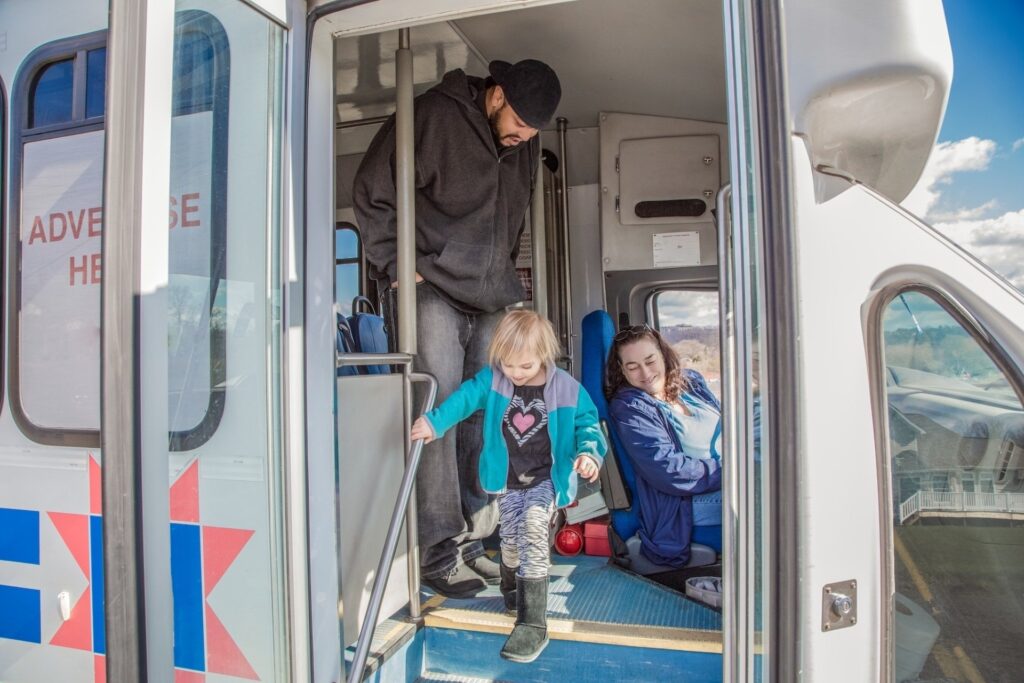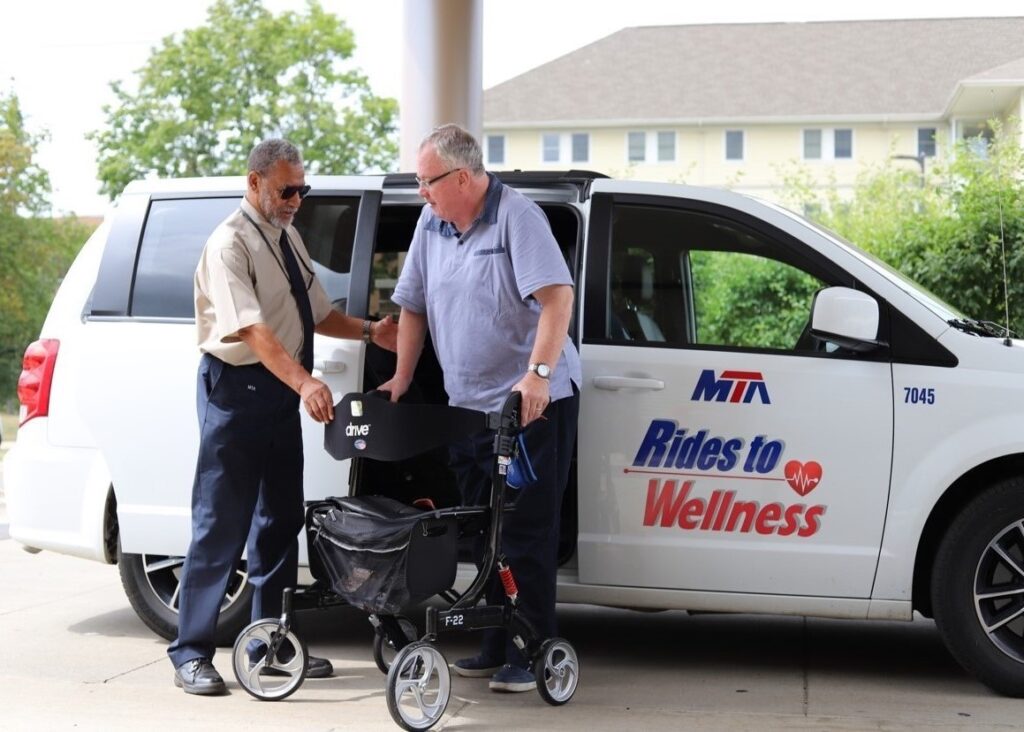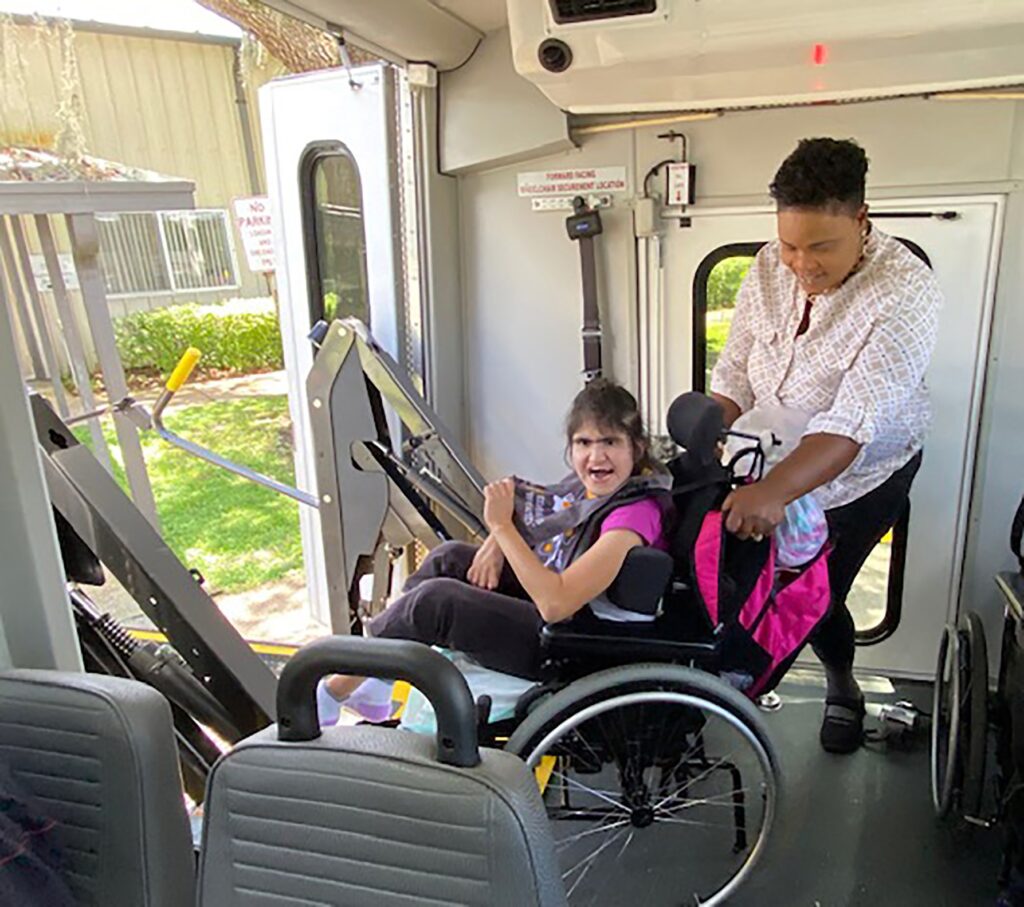A Recap of Medicaid Non-Emergency Medical Transportation (NEMT) Listening Sessions
By The Shared-Use Mobility Center and National Aging & Disability Transportation Center
Sep 7, 2022
Revised March 2025
Background

This blog post gives an overview of Medicaid NEMT service and also summarizes the Center for Medicare & Medicaid Services (CMS) sponsored listening sessions that allowed mobility providers and stakeholders to provide feedback and shared learning about ways to improve the Medicaid program and NEMT benefit.
Medicaid is a national program that provides health coverage to eligible low-income adults, children, pregnant women, older adults, and people with disabilities. It is a federal requirement funded by both State and Federal governments. Medicaid is administered by states meaning the program can look and operate very differently from state to state.
Medicaid differs from traditional health insurance because it assures transportation to necessary medical care through the NEMT benefit. This NEMT benefit is integral to getting Medicaid beneficiaries who have no other means of transportation access to medical services. Beneficiaries of Medicaid tend to include the most disadvantaged and vulnerable populations who often lack transportation resources, need frequent medical assistance, and live in lower-density or rural communities. Until recently, the NEMT requirement was not law but an interpretation via regulation and subject to interpretation, elimination, or waivers. In December of 2020, the Consolidated Appropriations Act of 2021, Section 209 of H.R. 133 (P.L. 116-260) was passed, which codified the Medicaid NEMT benefit into law. Congress clarified that NEMT is a statutorily required benefit and required CMS to convene a series of NEMT stakeholder meetings.

About the NEMT Listening Sessions
In Spring 2022, CMS, assisted by a contractor, conducted four stakeholder listening sessions focused on the topics below:
- Provider Enrollment Requirements and Eligibility Determinations for Providers/Drivers
- Program Integrity, Correct Billing Concerns, Documentation, and Data Requirements for NEMT Providers
- NEMT Coordination Topics – Brokers, MCO’s, Community Transportation, and Paratransit Services
- Economic Factors and Cost Containment Challenges in NEMT
The recorded sessions are available on the Medicaid website. CMS will be compiling the information from the listening sessions and using it to inform Medicaid NEMT sub-regulatory guidance[1] that will be sent to State Medicaid Agencies in 2023.
In addition to these sessions, the Federal Transportation Administration (FTA) worked with five FTA-funded national technical assistance centers, (National Aging and Disability Transportation Center, National Center for Mobility Management, National Center for Applied Transit Technology, National Rural Transit Assistance Program, and the Shared Use Mobility Center) to host a listening session for public transportation providers to share NEMT input directly with CMS and FTA. This invite-only session allowed the focus to be on this stakeholder group’s experience and direct role in public transportation and NEMT in their communities and states. Stakeholders shared concerns and recommendations on NEMT policy updates, and guidance clarifications with CMS and FTA.
It is important to note that the delivery of Medicaid NEMT varies among states. Some states use statewide or regional brokers – private or public, not all states use public transit as a provider of NEMT, and reporting requirements differ, as do reimbursement rates and system processes. The listening sessions were an opportunity for providers and stakeholders of NEMT to provide feedback and share their experiences with NEMT.
The information below highlights key takeaways from the listening sessions.
[1] Under development, CMS plans to issue Guidance in 2023 as a result of the Consolidated Appropriations Act, 2021, Division CC, Title II, Section 209.

Key NEMT Listening Session Takeaways
Public transportation coordination and using existing infrastructure
Transportation service delivery is often fragmented among human service programs, resulting in duplication of services and inefficient use of resources. Due to the lack of coordination among programs, several agencies may all be offering transportation services in the same neighborhood and using separate vehicles to pick up their clientele. These fragmented transportation systems make it difficult for riders to navigate and access services within and outside their area.
The extent to which states coordinate Medicaid NEMT with other transportation programs varies. Few states have coordinated their Medicaid trips with the public transportation network because of contracting requirements and differences in service standards for NEMT versus other modes of public transportation, including driver requirements, funding source guidelines, and federal regulations. Yet, further coordination among NEMT and other transportation services is needed to improve the Medicaid beneficiaries’ experience and increase access to services within and outside Medicaid coverage.
Better coordination with public transportation and the use of existing infrastructure provides opportunities for NEMT services to reach a greater number of diverse beneficiaries. It is beneficial for NEMT brokers and managers to work with rural and urban public transportation programs as these systems have established relationships with community providers in their region and, in some cases, partnerships with health care systems. These relationships further support individuals gaining access to medical care.
NEMT transportation providers often have a hard time serving long-distance trips or lower-density communities because of fewer NEMT providers, driver capacity, service area size, funding guidelines, or reimbursement policies. These challenges often inhibit access to major medical services, especially for those in rural areas who must travel to larger urban areas for specialty appointments. Some participants suggested that CMS should encourage brokers and NEMT programs to establish rural strategies specifically addressing the unique challenges of providing NEMT in rural areas.
Lastly, listening session participants noted that there is a great deal of program integrity built into the public transportation network that CMS could replicate to improve programming quality and processes. Since FTA-funded systems already have requirements regarding driver certification and training, as well as safety and maintenance procedures, CMS could draw from public transportation models to inform NEMT training and safety standards.
The NEMT benefit should be broadened to include other transportation services outside of medical appointments
NEMT is a vital piece of ensuring that those using Medicaid and Medicare can access essential medical appointments. Access to basic needs such as housing, employment, education, and healthy food are not covered under the NEMT benefit despite their role in a person’s social well-being and overall health. Throughout the listening sessions, many participants noted that CMS should include transportation services that contribute to other social determinants of health to the NEMT benefit.
NEMT programs that use Transportation Network Companies (TNCs) can present challenges regarding accessibility and safety
A growing number of state agencies are allowing the use of TNCs to provide NEMT services. However, when brokers use subcontractor services such as Uber and Lyft, they cannot always accommodate those with mobility limitations, resulting in vehicle inaccessibility. The use of TNCs for NEMT can also lead to customer confusion, with some patients refusing to get into Uber and Lyft vehicles because they are unfamiliar with the vehicle or do not feel comfortable with the driver. During the listening sessions, participants noted their concern that using TNCs sacrifices safety and training standards, factors valued by beneficiaries, and required by CMS regulation for all other transportation providers. While TNCs hold the potential to reduce transportation costs in some areas and, in turn, serve more individuals, their use should be evaluated to address beneficiary concerns, particularly regarding driver training, screening, and assuring an adequate supply of accessible vehicles.
There is a need to standardize data and information reported by NEMT providers
Many participants of the listening sessions support universal provider standards that address driver eligibility criteria, vehicle conditions, trip reporting, and penalties for non-compliance. Often providers are faced with inconsistent definitions and standards, which increases the administrative burden and cost associated with managing multiple sets of requirements. Some suggest that the ability to pay providers and hold them accountable starts with standardizing data and requiring digital information.
To ensure program integrity, there needs to be processes and systems in place to prevent fraud and assure access to high-quality NEMT service
The brokerage model, which involves states contracting with a third-party company to manage NEMT, is used by many states to keep costs consistent, limit their liability, and reduce the administrative burden when navigating Medicaid regulations. However, there tend to be vast differences in service quality depending on the transportation company chosen to manage NEMT, the number of transportation providers available, and state agencies’ capacity to practice strong and effective oversight over brokers. While some communities have strong NEMT programs, others have consistent issues resulting in missed medical appointments, unsafe or uncomfortable rider conditions, and distrust of the program.
Although there are barriers to new technology adoption, listening session participants noted that electronic scheduling and GPS tracking systems should be leveraged to improve program integrity, on-time performance, and integration of services across multiple providers. Others suggested that an improved complaint process for beneficiaries would help ensure access to services and allow states to conduct effective oversight.
About the Organizations
National Aging and Disability Transportation Center (NADTC) promotes the availability and accessibility of transportation options that meet the needs of older adults, people with disabilities, and caregivers.
Shared-Use Mobility Center (SUMC) is a public-interest organization and a national thought leader in shared mobility. Since early 2017, the Shared-Use Mobility Center (SUMC) has partnered with the Federal Transit Administration (FTA) to provide research and technical assistance to transit agencies around the country. SUMC facilitates the right discussions around emerging challenges in the planning and implementation of innovative mobility projects. Through individual guidance, peer-to-peer learning, and workshops, we nurture new ideas and provide targeted resources to enable their success.